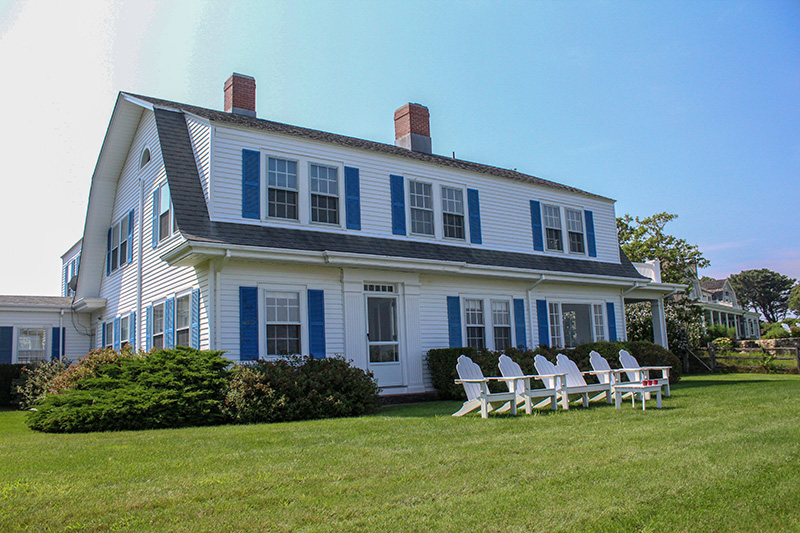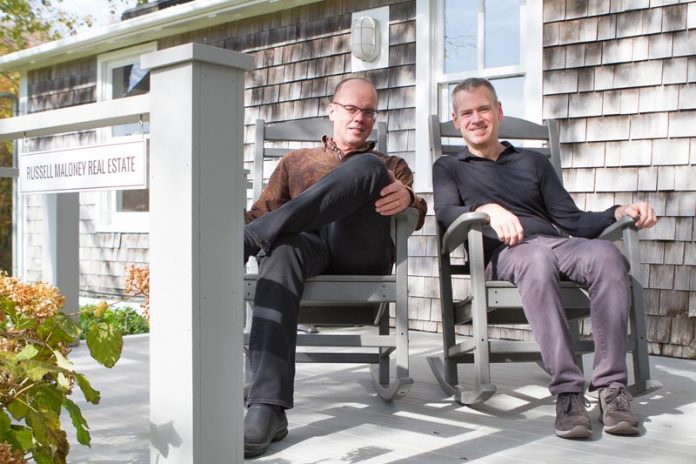First of all, I’m not an architect or a builder, just a civilian who over the years has had a couple of outside showers built, and we’ve learned from our mistakes. Although we’re still hardly state-of-the-art, we have picked up a few tricks along the way. Some have to do with the way the shower is constructed, some just have to do with getting the most bang for your outside-shower buck.
It’s funny, we rent our house in the summer and we’ve found that maybe only half of our renters actually take outside showers. Not that we’re peeking or anything, but you can just sort of tell. Which is unfortunate because taking a shower out under the stars is one life’s greatest pleasures.
Here’s what else we know:
- Taking an outside shower gives you permission to be naked outside — and don’t pretend you don’t know what I’m talking about. It’s a little forbidden; it’s totally liberating. And the less that comes between you and the universe the better. If you can get by with three walls, or even two walls with landscaping to provide some privacy, all the better.
- Bench or no bench. The first outside shower we built had no bench. It was really nothing more than a stall created out of cedar siding against the outside wall of our house. Besides, I was never much of a bench guy and couldn’t imagine using one unless I wanted to shave my legs. But we built a bench into the outside shower of our guest house, and the first time I used the shower was on a hot July afternoon after I had just finished spreading a truckload of mulch. I sat down in that shower and let the water pour over me. It was life changing.
- Put the shower where the sun shines. This depends upon the light pattern of your house. Personally, I like to take a shower in the sun so, generally speaking, you shouldn’t build one on the north side of your house. If you want to take shower in the morning, have it face east. If you want to take a shower at the end of day when you return from the beach, build it facing west. Being exposed to the sun also helps the wood dry out and preserves it.
- Don’t build too close to the house. Over time, the siding of the house will rot; trust me, we learned that the hard way. If possible, build a detached shower. It gives you more flexibility sighting the shower so it can get the maximum exposure to the sun.
- Build in a dressing room. If you have a little anteroom where you can step out and change into your bathrobe or whatever, it eliminates getting your towel or bathrobe wet and going through all sorts of contortions so you can be decent by the time you emerge from the shower.
- Never put a roof on top unless you’re trying to block vision from above. Or unless your spouse thinks it’s funny to throw cold water over the wall into the shower. Yes, Joyce, I know that’s you. And it’s not funny anymore.
- Take a shower in the rain. It’s not like you’re going to get any wetter, and for some strange reason it just really feels good. Same principle applies to taking a shower outside when it’s cold. Some people have showers they can turn on in the house so the pipes don’t freeze, and I can only imagine what taking a hot shower in a snowstorm must feel like.
- Shower heads. This is a good opportunity to really personalize your shower. You can have pulsating, misting, rain heads, you name it.
- Shave outside in the shower. Just hang a little mirror on the wall. The amazing thing is that because your face is so moisturized, the blades last much longer. And with the price of blades being what it is today, you could probably pay for the whole shower in a matter of months.
- And use liquid soap. If you use bar soap and it sits out in the rain for a few days it magically disappears.

A few questions for South Mountain Company’s (SMC) Ryan Bushey (architecture co-manager and co-owner) and Matt Coffey (architect & co-owner) about the showers pictured on these pages.
Ryan worked on the Abel’s Hill project; Matt on Prospect Hill.
What did each of the clients say to you about what they wanted with an outdoor shower?
Ryan: The shower design was based on the same design guidelines that we created with the clients for the house: emphasize the natural beauty of the site, celebrate natural materials, incorporate curves, and make it well so it works simply and it lasts.
Matt: They were interested in having a shower that was convenient to them when returning from the beach, close to the driveway and also nearby the bedroom wing to act as a second shower option for the three bedrooms on the first floor that share a bathroom. The shower offers privacy from neighbors, as well as from any spaces in the house, and has a bench space for changing. The shower geometry opens to the north, framing views of the Elizabeth Islands, and is equipped with flush step lighting so that it can be used after sunset as well.
Was the idea for each of these South Mountain’s, or did you just make the client’s visions come to life?
Matt: The shower was built several months after the home was completed. The aesthetic for the shower developed from a series of details that were used for outdoor portions of the house, and a guiding suggestion from the owners to maintain an overall cohesion. Within this design parameter, SMC shaped the geometry of the shower and detailing to create a playful folly in the landscape.

What about the site affected the design of the showers?
Ryan: The site has a beautiful south-facing view of the ocean but the house and South Road are nearby, so it was a challenge to create a space that was open to the view but also felt private and “away.” The house design features a serpentine interior wall that starts at the hub of the house — a circular kitchen — and weaves its way along the length of the building, ending in the master bedroom. The shower design is an extension of that same curve. It also follows the proportions of the golden mean, a ratio found throughout the natural world, spiraling like a nautilus shell into a central tree post for the showerhead. The wall of the shower enclosure starts about a foot off the ground and gets taller as you wind into the shower, creating a gentle transition from exposed to enclosed. The wall is low enough on the water side to enjoy the view, but tall enough on the house and road side to create a private space. The unfinished granite, reclaimed wood, and raw copper are left to weather naturally.
Matt: The shower is kept narrow at the approach side to minimize the profile as seen from the driveway and the walls splay open toward the Northern views. The neighbors to the East and West were strategically blocked as well as views from the second floor sunset room.
Were you constrained by the light/site/exposure, as far as design and materials?
Matt: The shower is composed of reclaimed fir timbers and clear white cedar slats. These materials will weather beautifully and stand up to the exposed coastal hillside location.
Does South Mountain staff all have outdoor showers at their homes? Any quirky ones? How late in the season do you/anyone else there use them?
Yes, from Matt Coffey: I have an outdoor shower at my house that is built from reclaimed redwood timbers and sheets of salvaged galvanized roofing. It is surrounded by 8-foot-tall zebra grass and completely open to the south side woods. Custom concrete piers were made by forming with small plastic trash cans flipped upside down. The plumbing is all exposed copper piping and simple ball valves with a low flow head. I have made a trash and recycling enclosure from a similar composition of parts.
South Mountain Company: 508-693-4850; info@southmountain.com; southmountain.com.
This story by Geoff Currier originally appeared on mvtimes.com.




